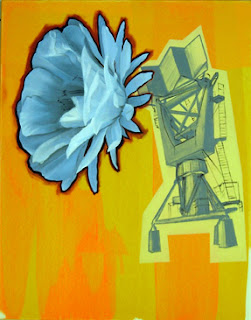I’m a Taurus and the ultimate pragmatist…and yet experience
tells me that there is more than meets the eye in all situations. I learned
this most vividly on the island of Bali in Indonesia. Bali is Hindu but really
the Hindu layer is very thin. The real spiritual core is animism – the belief
that everything is alive and sentient. If you’re willing to get off the
tourists’ air-conditioned bus, it doesn’t take long to feel that living
presence in all the elements around you. Feelings can be discounted easily by
the western mind. Unexplainable experiences are something else. I had enough of
those on Bali to convince me that I am surrounded by an unseen world, on Bali
or off of it.
Fast-forward 5 years to my present life doing permaculture
in the desert. Permaculture can be extremely pragmatic and suits me well. There are
systems to learn, patterns to observe, tools to use, holes to dig etc. And yet,
I have recently arrived at a place where I understand that something is
missing. It started as a slight discomfort and has grown into an acute
certainty. My suspicion was that I had left out my connection to the unseen and
the important information that is held in that world. I was observing and
interpreting the patterns of nature without making a connection to the realm
from which those patterns flow. In certain circles (at Findhorn for example)
this would be called the Devic Realm – the realm of conscious energies that
build the natural world around us. Now, don’t get me wrong. I am not convinced
that this realm actually exists in the form described at Findhorn but I am
willing to find out for myself. Being a pragmatist, my thinking is that we who
wish to regenerate our bioregions need all the help we can get.
Over this last summer, I traveled with my mate through California to meet
other permaculture people and groups. But my personal homework was to find a way
to make contact with this realm. I feel that I was successful at this and came
to understand that the language of this realm is artful, symbolic and startlingly immediate. Here’s
how I did it on advice from my friend D.E. Whenever I found myself in a remote
part of a forest where I felt particularly relaxed I would ask for contact, my
purpose being to gratefully listen and learn. Let’s just say that, among other
responses, I got a stunning lesson from a salamander on the importance of
consuming and digesting one’s past.
Along with all the digging, building, reading, planting and
systems implementation, I’ll be continuing with my attempts to strengthen and
clarify my communication with this realm. I’ve only just begun. For me, the
real proof will be when I receive information that is contrary to everything
I think I know and I go ahead and implement it…and IT WORKS.
Much thanks to D.E. and G.F. for your guidance.



